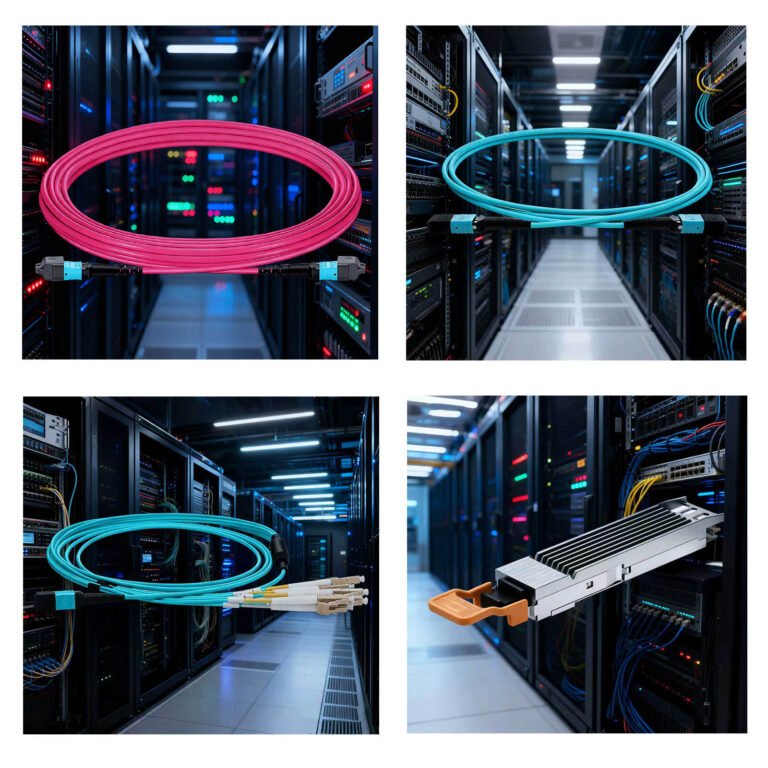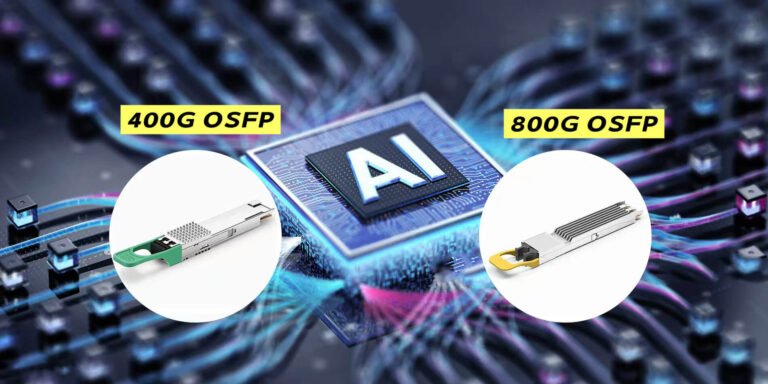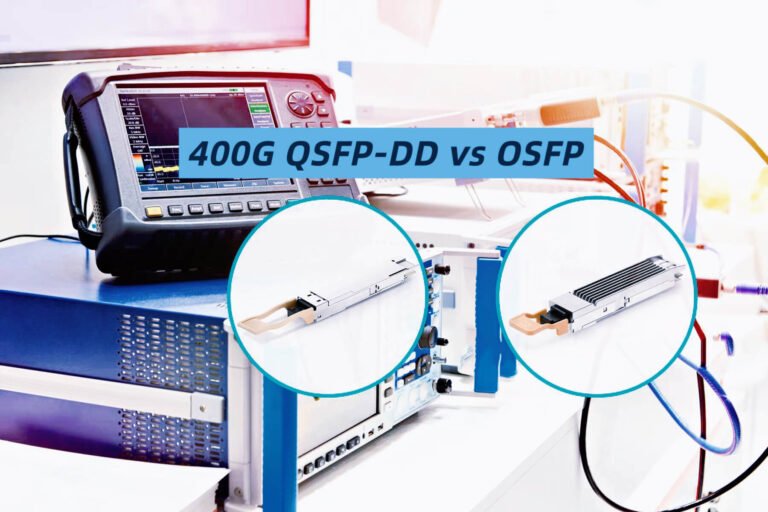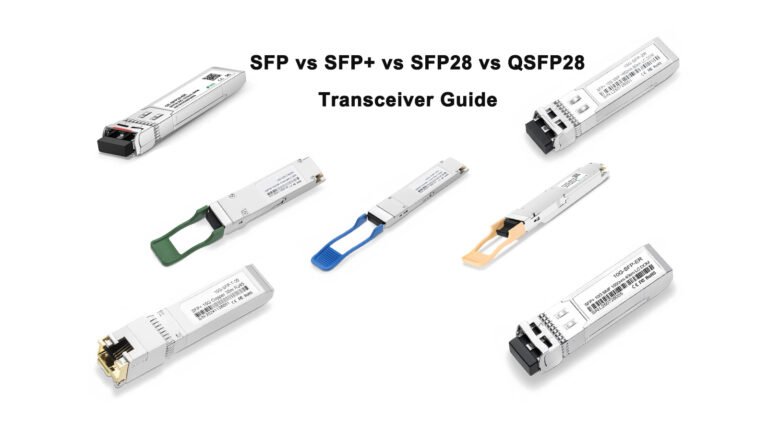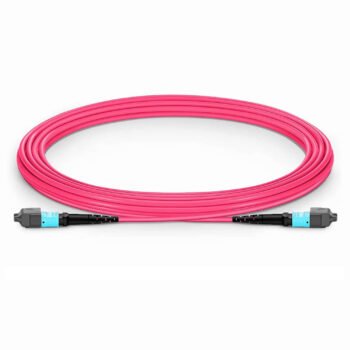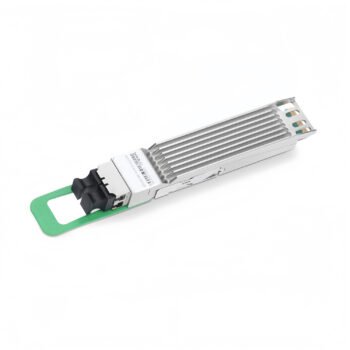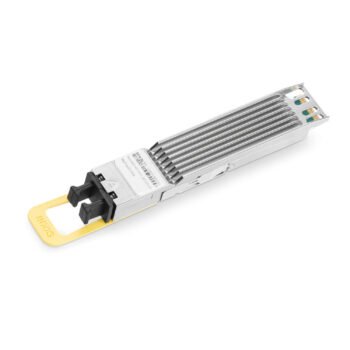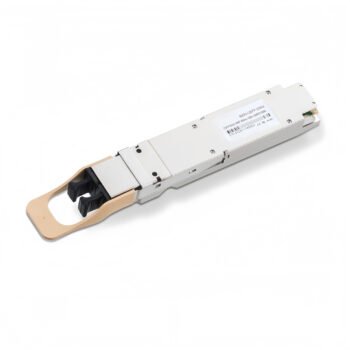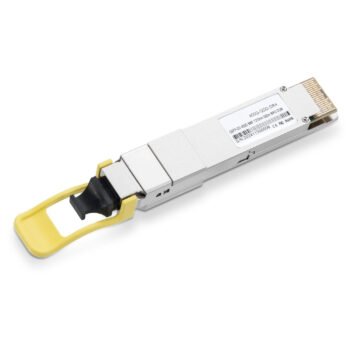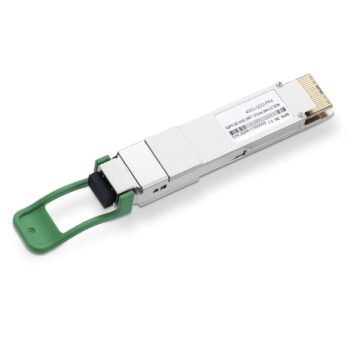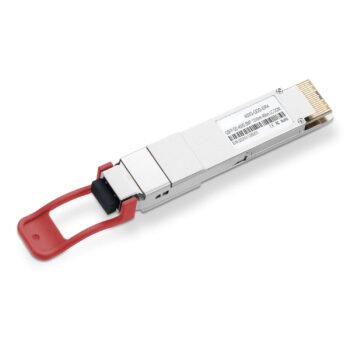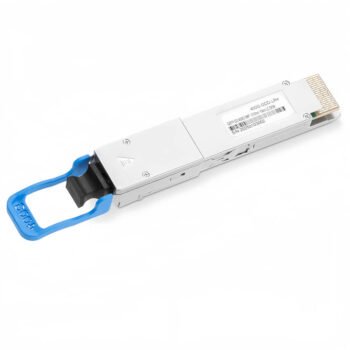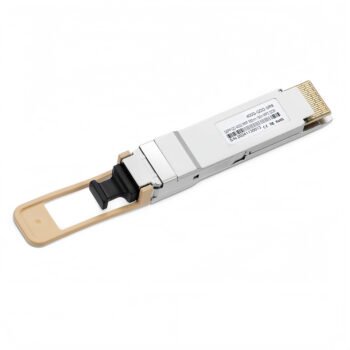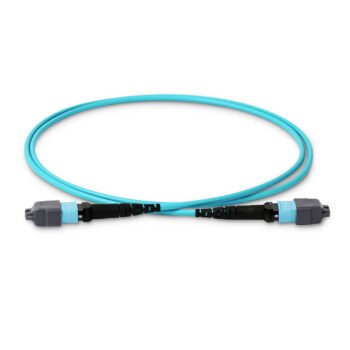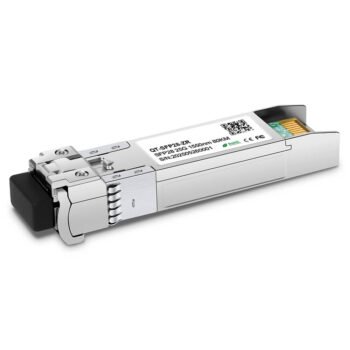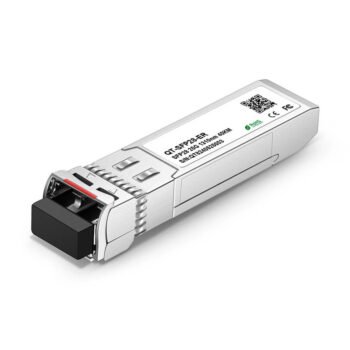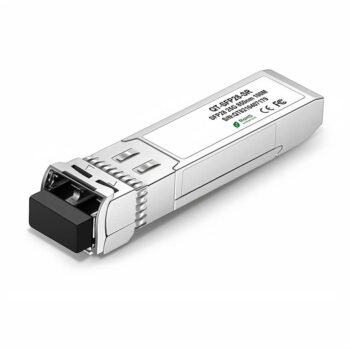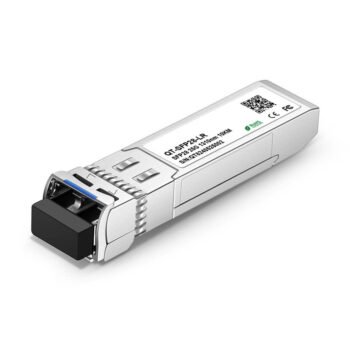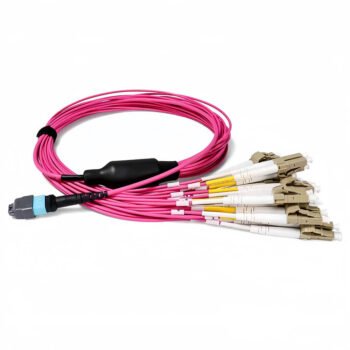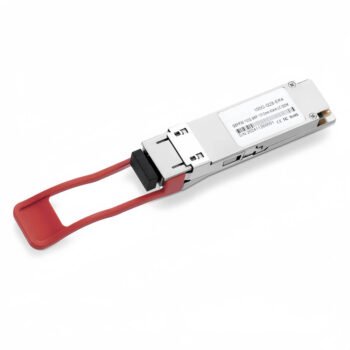What is the Difference Between 100G QSFP28 SR4, LR4, ER4, CWDM4, and PSM4 Modules?
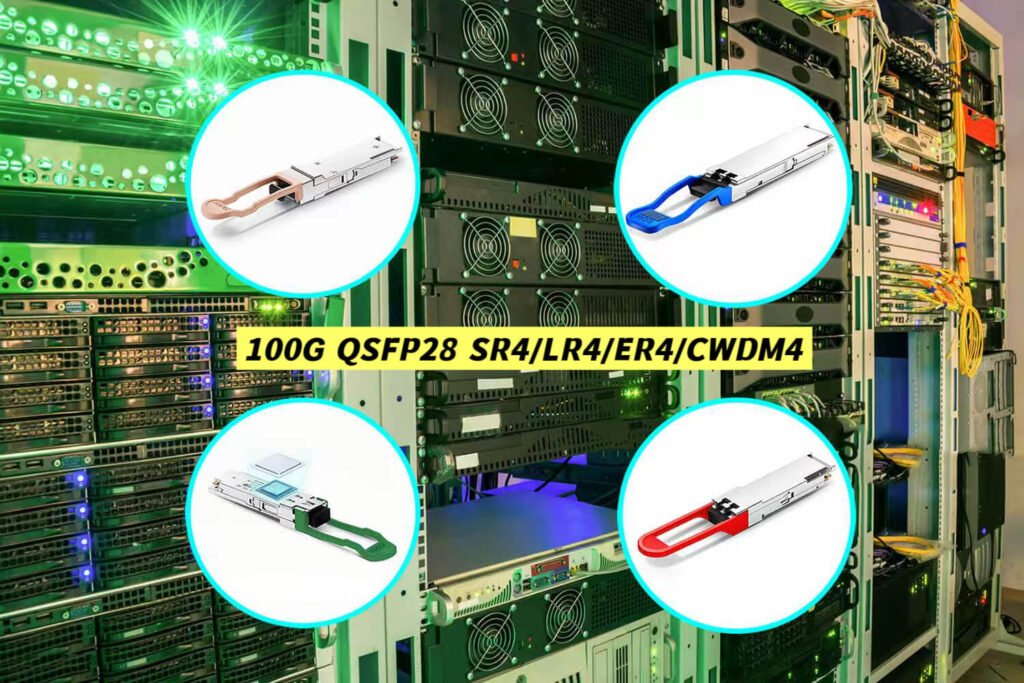
100G traffic is now everywhere: spine–leaf fabrics, AI clusters, storage, metro rings. Yet many engineers still ask the same question at the procurement stage: which 100G QSFP28 should I pick—SR4, LR4, ER4, CWDM4, or PSM4—and why? Picking the wrong one raises cost, burns fibers, and delays go-live. This guide explains the real-world differences and links directly to Abptel’s product pages so you can act fast.
Short answer: choose SR4 for short-reach MMF inside the data hall, CWDM4 for economical 2 km SMF, PSM4 when you already have 8-fiber SMF trunks, LR4 for 10 km metro/ campus, and ER4 for 40 km backbone. Validate connector type and fiber count before ordering.
What does QSFP28 mean in 100G transceivers?
QSFP28 is the 100G form factor that keeps the same mechanical size as 40G QSFP+1 but upgrades the electrical lane rate to ~25–28 Gbps per lane (4 lanes = 100 G). It offers higher density, lower power, and better cost than older CFP/CFP2/CFP4 packages. On the faceplate it looks identical to QSFP+, which is why switch vendors can ship very high port counts in 1U/2U spines2
Optical interfaces vary by variant:
- QSFP28-SR4 — uses MTP®/MPO-12 on OM3/OM4 multimode; 4×25 Gbps over 8 fibers.
- QSFP28-PSM4 — uses MTP/MPO-12 on single-mode; 4×25 Gbps over 8 fibers (parallel SMF).
- QSFP28-CWDM4 — uses duplex LC on single-mode with 4 CWDM wavelengths (1271–1331 nm).
- QSFP28-LR4 — duplex LC on single-mode using LAN-WDM (1295–1310 nm), 10 km.
- QSFP28-ER4 — duplex LC on single-mode at 1310 nm band with higher power budget, 40 km.
Internal links to Abptel products
• SR4 → 100G QSFP28 SR4
• CWDM4 → 100G QSFP28 CWDM4
• LR4 → 100G QSFP28 LR4
• ER4 → 100G QSFP28 ER4
To cable SR4/PSM4 ports cleanly in high density, pair them with MTP®/MPO Trunks and MTP/MPO Cassettes. For TOR breakouts, use MTP/MPO Breakouts; for patching, MTP/MPO Jumpers.

How do SR4, LR4, ER4, CWDM4, and PSM4 modules differ in distance and application?
The table below summarizes the interface, fiber type, and reach so you can map variants to your use case quickly.
| 100G Variant | Connector / Lanes | Fiber Type | Typical Wavelengths | Max Distance | Best Fit |
|---|---|---|---|---|---|
| QSFP28-SR4 | MTP/MPO-12 (8 fibers active, 4×25G) | OM3/OM4 MMF | 850 nm (VCSEL) | 70 m (OM3), 100 m (OM4) | Short-reach inside the data hall; server/leaf to spine aggregation |
| QSFP28-PSM4 | MTP/MPO-12 (8 fibers, 4×25G) | SMF (parallel) | 1310 nm (DML) | 500 m | Where 8-fiber SMF trunks already exist; cost-optimized short SMF links |
| QSFP28-CWDM4 | Duplex LC (4λ on one pair) | SMF | 1271/1291/1311/1331 nm | 2 km | Economical medium-reach DCI / spine-leaf; saves fiber vs PSM4 |
| QSFP28-LR4 | Duplex LC (LAN-WDM, 4λ) | SMF | 1295–1310 nm | 10 km | Campus/metro aggregation; carrier hand-off |
| QSFP28-ER4 | Duplex LC (1310 nm band) | SMF | ~1310 nm | 40 km | Metro/backbone without amplification |
Cabling impact:
- SR4/PSM4 require MTP/MPO cabling. Make sure polarity is correct (Type-B for most data center parallel optics) and that port gender (male/female) matches your trunks and cassettes3
- CWDM4/LR4/ER4 run over duplex LC single-mode (OS2), so they’re ideal when fiber counts are limited, or when you plan for later 400G upgrades that keep LC DR1/FR1 breakouts4
Decision tip: If you need ≤100 m inside the hall, SR4 is cheapest overall—if you already use OM4/MTP. If you need 100 m–2 km across buildings or rows, CWDM4 usually gives the lowest total cost because it uses two fibers instead of eight as in PSM4 (cable plant savings often outweigh the module delta).
What laser types are used in different 100G QSFP28 modules?
Laser choice explains power, reach, and price:
- VCSEL (Vertical-Cavity Surface-Emitting Laser5) — compact, low-power, low-cost; perfect for SR4 on multimode fiber.
- DML (Directly-Modulated Laser) — simple driver, good for PSM4 and CWDM4 up to ~2 km; lower cost than EML.
- EML (Electro-Absorption Modulated Laser) — high extinction ratio and better dispersion tolerance; used in LR4/ER4 for 10–40 km.
| Variant | Typical Laser | Why it fits |
|---|---|---|
| SR4 | VCSEL @ 850 nm | Lowest power and cost for very short links |
| PSM4 | DML @ 1310 nm | Simple optics for 500 m over parallel SMF |
| CWDM4 | DML @ 1271–1331 nm | 4 wavelengths on one SMF pair up to 2 km |
| LR4 | EML | Better dispersion performance to 10 km |
| ER4 | EML with higher power budget | Reaches 40 km; often with APD receiver. |
When you evaluate datasheets, look at Tx type, Rx type, OMA sensitivity6, and power budget rather than only “max distance.” Fiber plant quality (loss, splices, patch panels) is just as important.
How to choose the right 100G QSFP28 module for your network?
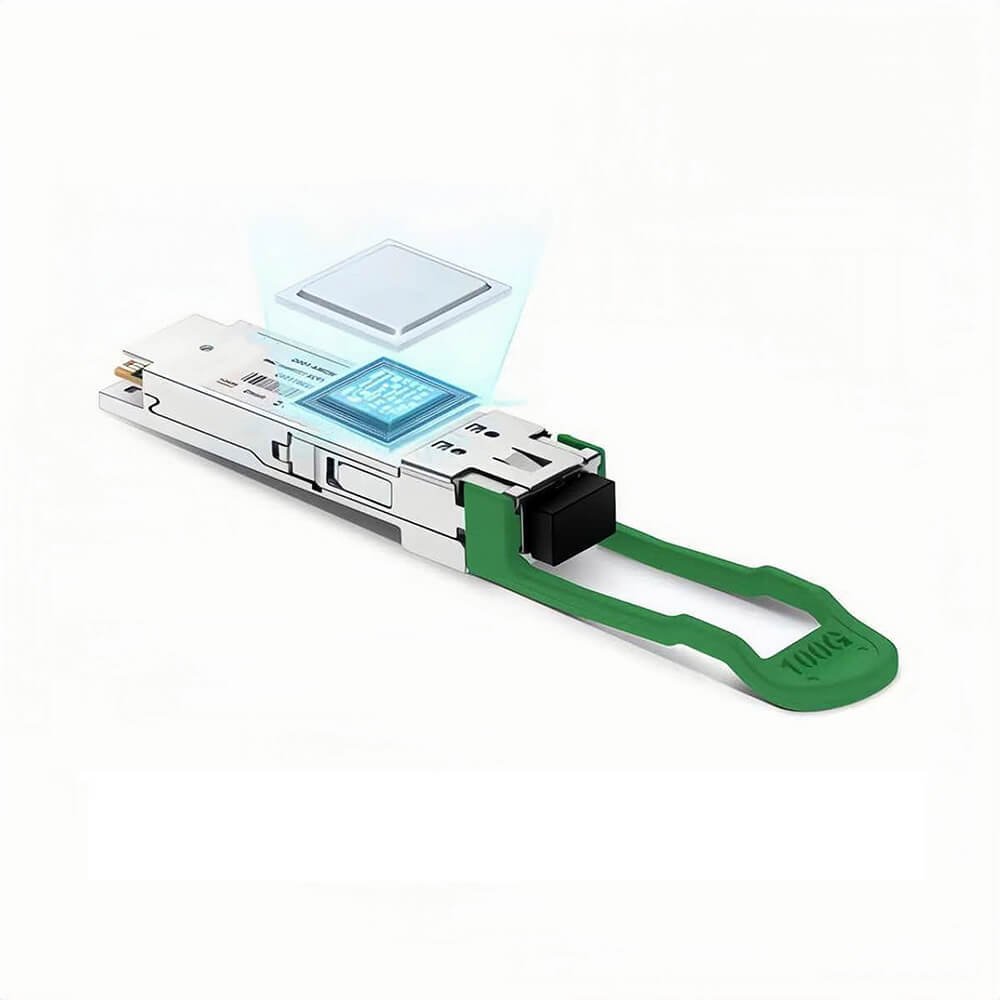
Use a simple three-step checklist before you buy:
-
Confirm reach & medium
- ≤100 m inside hall → QSFP28 SR4 over OM4 + MTP/MPO Trunks and Cassettes.
- 100 m–2 km → QSFP28 CWDM4 (LC, 2 fibers). Choose [PSM4] only if you already have 8-fiber SMF trunks. 5
- 2–10 km → QSFP28 LR4.
- 10–40 km → QSFP28 ER4.
-
Match connectors & polarity
-
Check power budget & loss
- Add up loss: trunks, panels, cassettes, jumpers. Keep IL comfortably below the module budget. For marginal paths, pick elite-loss trunks or reduce patch points.
Quick selector (distance first)
| Required Reach | Best Choice | Fiber Required | Notes |
|---|---|---|---|
| ≤70 m (OM3) / 100 m (OM4) | SR4 | 8× MMF via MTP/MPO | Lowest $/port inside hall |
| ≤500 m | PSM4 | 8× SMF8 via MTP/MPO | Consider only if 8-fiber SMF exists |
| ≤2 km | CWDM4 | 2× SMF (duplex LC) | Best balance of fiber & optics cost |
| ≤10 km | LR4 | 2× SMF (duplex LC) | Campus/metro aggregation |
| ≤40 km | ER4 | 2× SMF (duplex LC) | Metro/backbone, check dispersion compensations per vendor notes |
Even if CWDM4 optics are slightly more expensive than PSM4, fiber savings and panel density often make CWDM4 the winner at 2 km.
Bonus: mapping 100G types to structured cabling
If your plant is already standardized on MTP/MPO, you can keep it consistent and still serve any reach:
- Use MTP/MPO Trunks between rows.
- Land SR4/PSM4 on MTP/MPO Cassettes if you need LC patching to devices.
- For TOR fan-outs or migration labs, deploy MTP/MPO Breakouts (1×MPO-12 to 4/8/12×LC).
- Keep a small stock of MTP/MPO Jumpers for clean, short connections.
This approach reduces MAC (move-add-change) time and makes 100G roll-outs repeatable.
Frequently asked quick answers
- Is QSFP28 backward-compatible with QSFP+? Form factor is the same, but optics are not. Many switches allow 40G/100G split/unsplit modes—check your NOS.
- Can I break out 100G into 4×25G? Yes—SR4/PSM4/CWDM4 variants support 4×25G in many platforms. Use appropriate breakout cables and ensure switch support. 4
- Which fiber for 100G? OM4 for SR4; OS2 for CWDM4/LR4/ER4/PSM4.
- When to choose ER4? When you need >10 km up to 40 km without amplifiers; check dispersion and DCM requirements per vendor app notes.
Conclusion
If you remember only one thing, make it this: distance and existing cable plant decide the right 100G QSFP28.
- SR4 wins for ≤100 m over OM4 inside halls.
- CWDM4 is the go-to for ≤2 km with just one LC pair.
- PSM4 fits legacy 8-fiber SMF trunks up to 500 m.
- LR4 covers 10 km metro/campus; ER4 reaches 40 km backbone.
From selection to cabling, Abptel can help you deploy quickly:
• 100G QSFP28 SR4 • 100G QSFP28 CWDM4 • 100G QSFP28 LR4 • 100G QSFP28 ER4
• MTP/MPO Trunks • MTP/MPO Cassettes • MTP/MPO Breakouts • MTP/MPO Jumpers
Choose the optics that match your reach, confirm connectors and polarity, and validate loss budgets. Do this, and your 100G rollout will be boring—in the best possible way.

